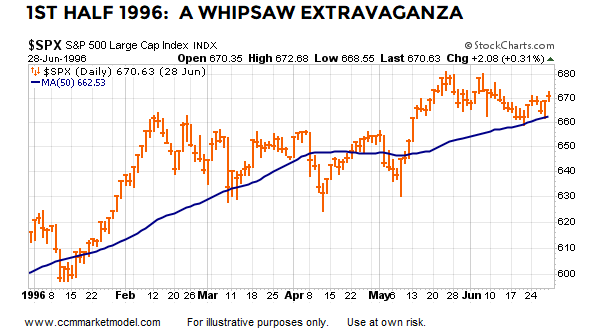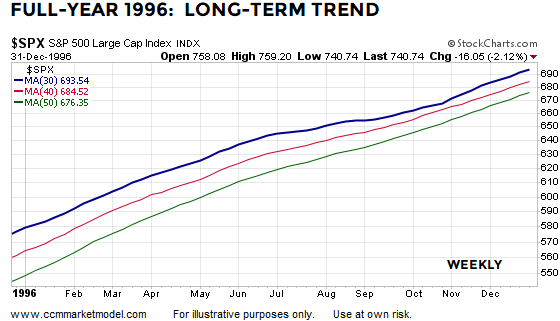BIG IMPACT OR SMALL IMPACT?
U.S. Treasury Secretary Steven Mnuchin indicated Sunday the U.S. is hopeful to strike a deal with China, which means the tariffs would never go into effect. However, if a deal cannot be reached, how significant are the tariffs relative to the big picture? From CNBC:
Jeremy Zirin, head of investment strategy at UBS Wealth Management Research, told CNBC that President Trump's announcement Thursday on tariffs on up to $60 billion in Chinese imports didn't seem that bad.
"The economic impact of [the tariffs] is less than one-tenth of 1 percent," Zirin told "Squawk Box."
"It's actually pretty bullish what we heard yesterday," he added. "If you look at the steel and aluminum tariffs as a template, things got watered down and then scaled back. So, if you look at the whole economic backdrop, still a very good profit momentum."
TWENTY-YEAR BREAKOUT
From a bigger picture perspective, the economy does not appear to be on the brink of a recession and the 20-year breakout in the Value Line Geometric Index is still in play.
AN OBJECTIVE LOOK AT THE MARKET AFTER FRIDAY'S SELL-OFF
Last week was ugly in the stock market. If we put normal human emotions aside and examine the facts, what can we learn about the odds of a new bear market relative to the odds of a resumption of the current bull market?
BULLISH TREND, FOLLOWED BY CONSOLIDATION
The stock market was unequivocally in a long-term bullish trend prior to the recent correction. As noted on March 21, the S&P 500 has drifted within a wide range since February 2, including last Friday's volatile session. As long as a sustained break of the lower end of the range does not occur (something that is entirely possible), the base case remains a normal correction within the context of an existing bull market. If a series of lower lows, below the lower end of the range, is in the cards, we must become open to more bearish outcomes.







